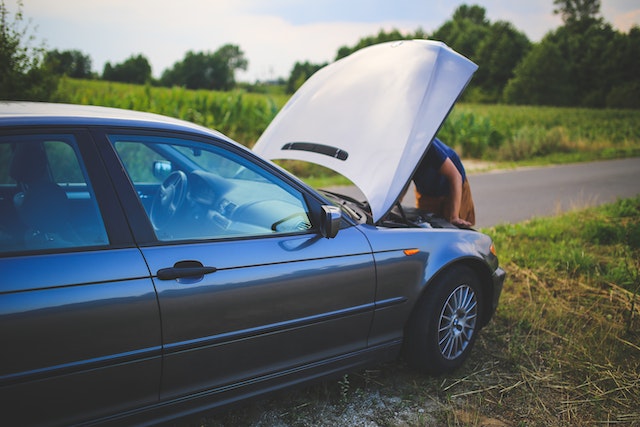Who Is Liable if a Product Is Defective?
If you're buying a product online, there's a chance that you may not know who exactly is liable if that product malfunctions or breaks.
In fact, it could be someone else entirely.
But don't worry, we've got you covered.
We're going to explain who is responsible for repairing defective products.
When you buy a product online, you might assume that the seller is solely responsible for fixing or replacing the item.
However, there are actually two parties involved in the transaction.
The first party is the retailer, which means they sell the product.
The second party is the manufacturer, which means they create the product.
Now, let's look at an example.
Suppose you bought a pair of shoes online.
You probably assumed that the company selling the shoes would be responsible for fixing the problem.
Unfortunately, the company isn't always the one that makes the shoe.
Instead, the company that creates the shoe is typically the one that fixes it.
For instance, Nike sells sneakers.
They don't make the sneakers themselves.
Instead, they contract with other companies to manufacture the sneakers.
These companies are called manufacturers.
As long as the manufacturer has followed proper safety standards, they aren't held accountable for defects in the product.
However, if the manufacturer fails to fix the defect within 30 days of receiving notice, they are legally obligated to pay for repairs.
Now, if you purchased a product that broke during normal wear and tear, the retailer may be responsible for paying for the repair.
However, this is rare.
Most retailers won't cover damage caused by misuse or abuse of the product.
If you need assistance finding the appropriate legal contact information for the retailer, please visit our website.
In the event of a product defect, which party may be liable? The manufacturer, the supplier or the distributor?
In the United States, there is no clear answer to this question, which has led to many legal disputes between manufacturers and retailers over the years.
In recent years, however, courts have increasingly sided with retailers, holding that they bear responsibility for products that fail to perform as advertised.
The U.S. Supreme Court recently ruled that a company cannot be held liable for injuries caused by a defective product unless it knew or had reason to know of the defect.
However, the court also stated that "a seller may not avoid liability simply by relabeling an item as its own."
Therefore, while a retailer may not be strictly liable for selling a defective product, he or she could still face liability under state law for failing to warn consumers about dangerous defects.
Product Liability Actions

In the United States, there are two types of products liability claims: strict liability and negligence. Strict liability refers to situations where a manufacturer or seller has no duty to warn consumers of a dangerous condition. Negligence involves failing to exercise reasonable care in manufacturing or selling a defective product. If a plaintiff can prove that a defect caused his injury, he may recover damages regardless of whether the defendant engaged in negligent or intentional conduct.
The first type of claim is known as strict liability. This means that the manufacturer or seller must be held liable even if they had no knowledge of the danger posed by the product. The second type of claim is called negligence. A plaintiff who sues under this theory must prove that the defendant failed to act reasonably in providing adequate warnings or instructions regarding the dangers associated with the product.
In both theories, plaintiffs must also establish that the defendant's failure to provide adequate warning or instruction proximately caused the injury. Proximate cause exists when the defendant's conduct causes an event which produces an injury without requiring additional unforeseeable intervening events.
Strict liability applies to manufacturers, sellers, distributors, retailers, wholesalers, importers, packagers, shippers, contractors, designers, builders, lessors, landlords, occupiers, users, purchasers, assemblers, suppliers, lenders, insurers, and other persons or entities involved in the design, manufacture, distribution, sale, rental, leasing, furnishing, installation, maintenance, repair, operation, or consumption of goods or services. It does not apply to those who merely sell a product in the ordinary course of business.
Negligence applies to manufacturers, sellers or distributors of products, including raw materials used in making the product; vendors, service providers, and others who perform work on the product before it is sold; and designers, architects, engineers, construction companies, and others who perform services on the product before it leaves the possession of the manufacturer or distributor.
There are many exceptions to strict liability and negligence. For example, a manufacturer cannot be held strictly liable for injuries resulting from defects in its finished products. Similarly, a retailer generally cannot be held strictly liable if the customer injures himself while handling the product.
Strict liability is usually imposed on businesses that produce hazardous substances. However, courts have carved out several exceptions to strict liability. These include:
- Products that are inherently unsafe
- Products that contain poisons
- Products that are ultrahazardous
- Products that were distributed in violation of federal law
- Products that were manufactured in violation of federal regulations
- Products that were made in violation of state safety standards
- Products that were negligently assembled or improperly maintained
- Products that were modified after leaving the factory
- Products that were mislabeled
- Products that were fraudulently misrepresented
- Products that contained inadequate warnings
- Products that were not properly tested
- Products that were unreasonably dangerous
- Products that were intended for agricultural purposes
- Products that were used for commercial purposes
- Products that are required by statute
- Products that were purchased for research or experimental purposes
- Products that contained asbestos
- Products that were contaminated with toxic chemicals
- Products that were adulterated
- Products that were produced in violation of FDA requirements
- Products that were imported into the U.S. in violation of customs laws
- Products that were altered after being received by the consumer
- Products that were marketed for uses beyond their normal scope
- Products that were advertised to the public as safe when they were actually unsafe
- Products that were sold to children
- Products that were bought through illegal channels
- Products that were stolen
- Products that were obtained by force or coercion
- Products that were unlawfully possessed
- Products that were illegally exported
- Products that were seized by government authorities
- Products that were acquired by employees of the company
- Products that were given away free of charge
- Products that were provided gratis
- Products that were donated to charitable organizations
- Products that were leased to customers
- Products that were rented to customers
- Products sold at flea markets
- Products that were offered for sale at garage sales
- Products that were displayed at trade shows
- Products that were placed on display at department stores
- Products that were stored in warehouses
- Products that were shipped directly to consumers
- Products that were delivered to consumers by common carriers
- Products that were transported by common carriers
- Product that were sold at auctions
- Products that were traded in for cash
- Products that were transferred to another party
- Products that were returned to the original vendor
- Products that were resold by the original vendor
- Product that were transferred to another person
- Products that were repossessed by creditors
- Products that were abandoned by owners
- Products that were destroyed by fire or flood
- Products that were lost or stolen

